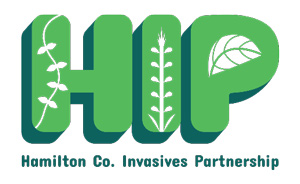
 This fall, the Hamilton County Invasives Partnership (HIP) and Hamilton County Soil and Water Conservation District (SWCD) are offering an invasive species trade-in program. For a limited time and as supplies last, property owners can show proof of removal of an invasive species on their Hamilton County property and receive one five-gallon native species specimen for free.
This fall, the Hamilton County Invasives Partnership (HIP) and Hamilton County Soil and Water Conservation District (SWCD) are offering an invasive species trade-in program. For a limited time and as supplies last, property owners can show proof of removal of an invasive species on their Hamilton County property and receive one five-gallon native species specimen for free.
Over 80 percent of invasive species growing in Indiana are thought to have come from the landscape trade. Many popular landscape trees and shrubs such as callery pear species and burning bush easily escape landscape cultivation and take over nearby rights-of-way, roadsides, and natural areas. These infestations cause erosion, animal habitat degradation, and loss of important native plant species. While many property owners may not see their specimen spreading, birds delight in the high sugar berries of invasives like Asian bush honeysuckle and burning bush, then deposit the seeds in natural areas as they fly.
To encourage homeowners to remove these species from their properties, SWCD is offering a trade-in program this fall. After showing removal of an invasive species via photo submission, Hamilton County landowners are able to receive a free five-gallon tree valued at over $50. The three native species available for trade include American hornbeam, hop hornbeam, and tulip poplar.
Landscape plantings of callery pear species, burning bush, Japanese barberry, and Norway Maple are the preferred species for removal, but you can apply when removing other invasive species listed on the Official Indiana Invasive Species Council Invasive Plant List. Trades are limited to one per address. Learn more and apply at hcinvasives.org.
